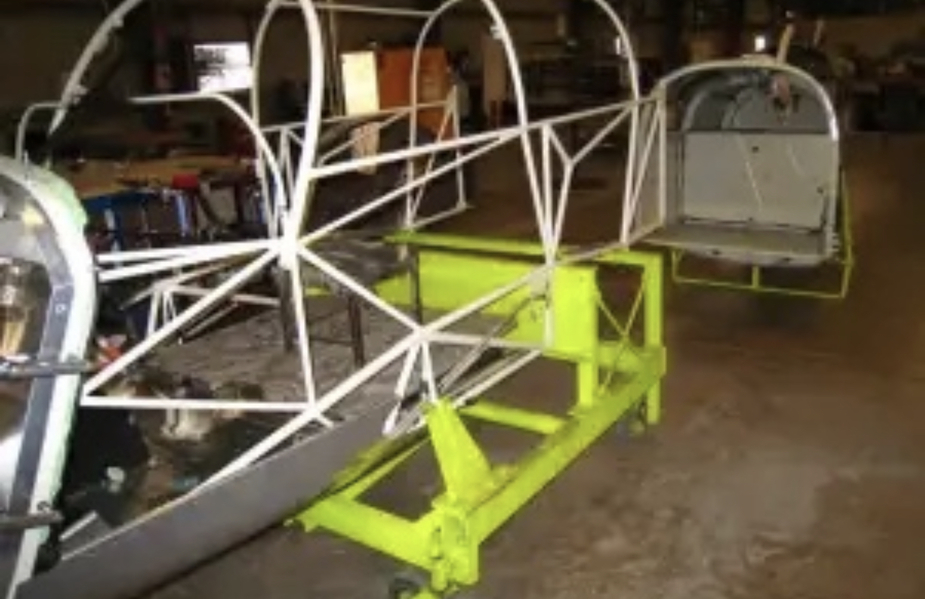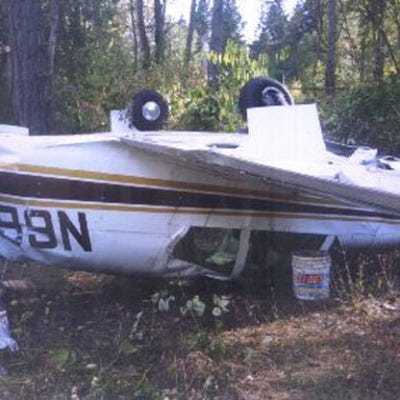Researching aircraft construction techniques I stumbled upon this blog of a Mooniac (attached as pdf).
I find it interesting that Cirrus is building plastic (err. composite) planes with life-limited airframes and then they try to convince the public that their product is superior to a Mooney. Yes, that’s right; the Cirrus and some other composite airplanes have a 10,000 hour or finite life limit of some-sort on the airframe/wings. When you reach the time limit on the airframe it is grounded forever. The sales reps say 10,000 hours is practically forever, so it isn’t a big deal. In reality they are probably right. Composite airframes simply will not hold up in the sun, weather, etc. as well as the tried and true metal airplane. They will likely be long gone before they ever see 10,000 hours.
I’m sure my first paragraph will not bode well with our composite friends, but the truth of the matter is they have spent good money on an airplane that will not withstand the test of time. There are many Mooney’s out there with thousands of hours and are going strong at 50+ years old. A metal airframe will pretty much last forever if it is given reasonable care.
As a previous Cirrus SR22 owner, I’m willing to bet that there will not be many Cirrus, Diamond, etc. airplanes that make it to 50+ years old. Certainly not as many as there are Mooney, Beech and Cessna’s. There are two primary reasons I make this claim: 1) Composite materials cannot easily be refurbished and they break down under stress; 2) mechanics in the field do not have the skills or equipment to properly inspect these structures or access to the facilities required to repair them. Sadly, many of these planes will likely be scrapped over time and the owners will suffer through huge
depreciation losses as savvy buyers start to figure this out.
Accordingly, the fit and finish isn’t there either. Simple parts like $1200 nose gear fairings that crack after one somewhat hard landing; $1500 cabin door pins that bend in seconds if someone closes the door wrong preventing the door from latching; technological upgrades are very difficult, if not impossible, due to the way they formed the instrument panels; you can’t refurbish a composite airframe like metal, so nicks and dings will be a fact of life for these owners…
I’m sure there will be owners like me who are meticulous, but I’m talking about the masses. I’ve seen Mooney’s that sit on a ramp their entire life and even have suspect maintenance, yet they are still airworthy and going strong. This will not be the case with the plastic planes. Of course, the NewCo’s know this. They don’t want them to last forever. They want to sell new planes, not maintain old ones. In the auto industry they call this planned obsolescence.
The core of all Mooney’s is the safety/passenger cage. This is a steel tube constructed roll cage that completely surrounds the passengers. This structure not only makes the plane safe, it also makes the plane strong. Very Strong!

Will those thin bars really help at all in the case of a crash?
Some more:
The next key structural component of a Mooney is the wing and spar. Unlike the plastic airplanes that have a plastic laminated spar, the Mooney has the strongest spar in the industry. This is why there are very few, if any, in flight breakups of Mooney’s. In fact, I’ve heard stories of pilots that have flown into severe T-Storms and back out the other side with virtually no damage to their airplanes. I don’t recommend flying into a T-Storm, but if you did so in a Mooney you’d probably survive and be darn glad you weren’t flying a plane with a plastic spar!
Self fulfilling prophecies are a thing with GA owners, no doubt, but is there any objective truth to what the guy says? Flying through TSRA in a Mooney… give me a break!
Mooney_Construction_versus_the_Competition_The_Making_of_N252Q_pdf
Snoopy wrote:
the Mooney has the strongest spar in the industry
What does that even mean? It’s my understanding that most planes aren’t limited by the spar as such, but rather by too much forces on the horizontal tail, seats (too much G and you may actually fall through the floor), engine mounts, and all kinds of stuff really. The wing itself on a carbon composite aircraft will easily hold +10g and then some (without doing anything special), but what about everything else ?
I am sure no SR22s will reach 50 years, but I don’t think that worries Cirrus  And Mooney are not in business anymore.
And Mooney are not in business anymore.
no doubt, but is there any objective truth to what the guy says?
Even vintage Mooneys can fly in 240kias (80kias above VNE) and stay in one piece, the wings are rated for +20G static but my neck will break first 
Not sure about thunderstorms though, I found M20J to be very slippery in convective conditions even with throttle well back…
Ibra wrote:
the wings are rated for +20G static
Seriousy?
Snoopy wrote:
Will those thin bars really help at all in the case of a crash?
More than no bars at all. Comparing the tube diameter with the tubes on a race car’s space frame: Not much. But what is better? A Mooney that can withstand crashes like a race car but is so heavy that it can’t fly or a Mooney that actually flies but will probably kill you when you crash it?
Seriousy?
I am serious the structral design of the wing was (+20G), max tested with wings on static bench was +9.5G, POH operating limit is +3.8G…it does not say anything above tail, elevator, engine or pilot neck or conciousness which I am sure will be gone past 6G (assuming flutter does not take pilot teeth before that)
The text by Jim Kerr is quite well known in the Mooney scene. It makes a good case for the design and explains some of the reasons, why Mooneys do indeed survive stuff that other airplanes don’t.
Up to this day, since the very beginning, there is ONE known case of airframe failure in a thunderstorm. There may be another in the works but that report is not out yet.
Similarily to the F model quoted earlier, there were several cases where massively bent airframes landed without much ado only to be found severely damaged (in this case this equals bent) up to being written off. But it did save the live of the pilot and his passengers.
And yes, this has to do massively with the fact that the wing is one piece and the spars go through completely. The wing can be taken off and replaced as a whole in a pretty “easy” procedure, at least in comparison to other planes as a consequence.
Another bit is the steel cage all Mooneys have. They have saved lives too, as it is really very strong, not unlike cages built for racing cars. I know at least 3 people who owe their lifes to that steel cage, one of them being my good friend “Mooneygirl” Jolie Lucas, who had an EFATO accident in her first E-Model many years back.
I think these figures, given that this is a 70 year old design, speaks for itself for the strength of this airframe.
I was not really aware of the lifetime limits to the Cirrus cell, which is really a bit surprising. Mooneys are built to last indeed. The only thing to watch for is corrosion of the main spar, which is why people usually are quite attentive to. The areas get checked regularly. If a wing is found beyond rescue, it can be changed out with a healthy wing quite easily as mentioned above, another bit which Mooneys are unique. There are some places where one goes for such occasions, the most prominent being Alan Fox (for whole wings) or Don Maxwell.
No design is perfect though. Leaking tanks are a plague and Mooneys have a tendency to burn after otherwise survivable accidents, mostly because of the integral tanks which may rupture. That has been some concern as they do occur with a certain regularity, the most recent prominent case being a brand new Acclaim Ultra, which killed it’s owner Marc Brandemuehl after a long fight with severe burns. Recent models are also notoriously short on payload, which the current Mooney Ownership is trying to change.
Nevertheless, I personally think the Mooney design has proven itself more than sufficiently over the last decades. I am looking forward to flying my C-Model for some time to come.
Ibra wrote:
I am serious the structral design of the wing was (+20G)
Amazing. But why? The only thing I can think about is as a side effect of getting extremely long fatigue life (like 10k years  )
)
Snoopy wrote:
Will those thin bars really help at all in the case of a crash?
They have done so many times.
I should try to get Jolie to post about her accident in that E-model. They crashed into a forest, the plane turned over but they all walked out of it. The cabin was practically not bent at all, despite a pretty hefty impact. This can be seen in several similar accidents,where the cabin stayed intact in otherwise totally mangled remains. I found one pic of this crash, which illustrates the point.
